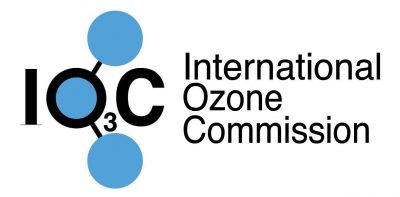
By Irina Petropavlovskikh, Secretary of the International Ozone Commission and a CIRES and NOAA scientist
September 16 is the International Day for the Preservation of the Ozone Layer, celebrating the 35th signing anniversary of the 1987 Montreal Protocol treaty on Substances that Deplete the Ozone Layer. We would like to report success in the reduction of the ozone-depleting substances (ODSs) in the stratosphere by about 25 percent since their peak in the late 1990s, which sets the ozone layer on the path of recovery by 2060.
The theme of the International Day for the Preservation of the Ozone Layer on 16 September 2022 is: “Global Cooperation Protecting Life on Earth.” Many controlled ozone-depleting substances warm the Earth, so the Montreal Protocol has avoided some climate change. The Kigali Amendment to the Montreal Protocol is set to deliver even stronger climate benefits, by phasing down hydrofluorocarbons (HFCs). While HFCs don’t directly damage the ozone layer, some of these compounds are powerful greenhouse gases. Controlling their use is expected to avoid 0.3- 0.5°C of global temperature rise by the end of the century.
The necessity for ongoing observations and associated research was emphasized by the significant Antarctic and Arctic ozone depletion events in the 2020-2022 period, and the unexpected increases in CFC-11 emissions between 2013-2018 that appear to have become much smaller subsequently.
The 2021 Antarctic ozone hole was the 13th largest since the start of the NASA satellite observational record in 1979, with an area of 23.34 million km2 and a minimum total ozone column of only 92 Dobson units (DU). The meteorological conditions that lead to the large size and depth of the 2021 Antarctic ozone were similar to those recorded in 2020, including near- or below-average temperatures in the lower stratosphere during austral winter and spring.
The ozone hole has recurred every year since the early 1980s and is caused by high levels of human-produced ODSs. Concentrations of ODSs are still high enough to cause severe spring-time ozone destruction. However, the continued gradual decline of ODSs overall is contributing to a slow improvement of Antarctic ozone levels during springtime.
The ozone layer is on the mend because of the Montreal Protocol. Studies published in the IO3C-sponsored ACP/AMT special issue discuss ozone recovery in the stratosphere and columns, analyze processes leading to recovery, and report on the importance of tracking the emissions of the CFC replacements. In addition, new research shows that the Montreal Protocol avoided significant UV damage to plants that would have reduced the uptake of carbon by plants. The authors reported that without the Montreal Protocol, an additional 115–235 parts per million of atmospheric carbon dioxide would have been released into the atmosphere by 2100, leading to “additional warming of global-mean surface temperature by 0.50–1.0 degrees.”
Our ability to follow significant ozone events is crucially dependent on satellite, balloon, and ground-based observing systems. Maintenance and continuation of ozone and ancillary observations are vital for improving our understanding of interactions between tropospheric pollution, climate change, and ozone depletion, identifying drivers of stratospheric and tropospheric ozone changes, and developing research tools for detecting potential future impacts on the ozone layer.
Read the full IO3C press release here.
For the current state of the ozone layer at the South Pole and to learn what happens to ozone during the Antarctic spring ozone season, follow this blog and visit NOAA’s South Pole Ozone webpage.
